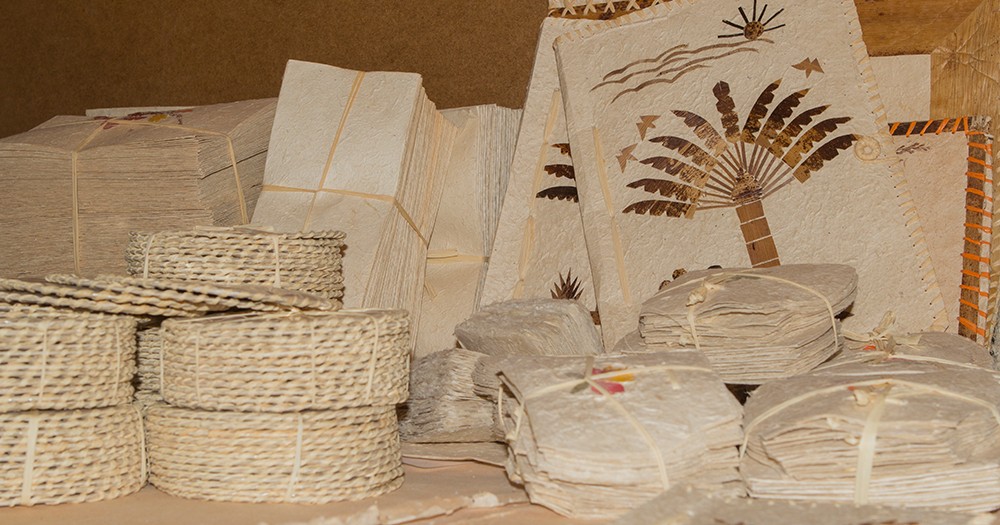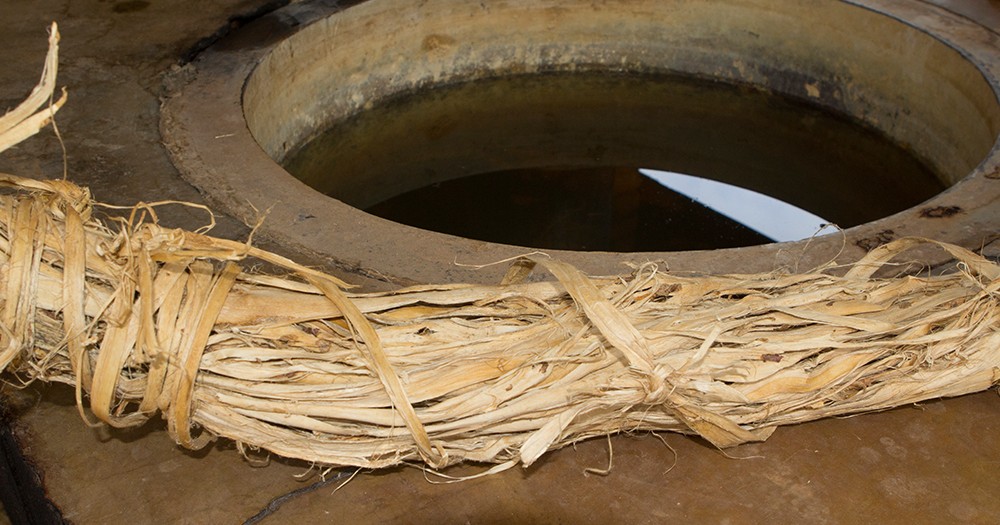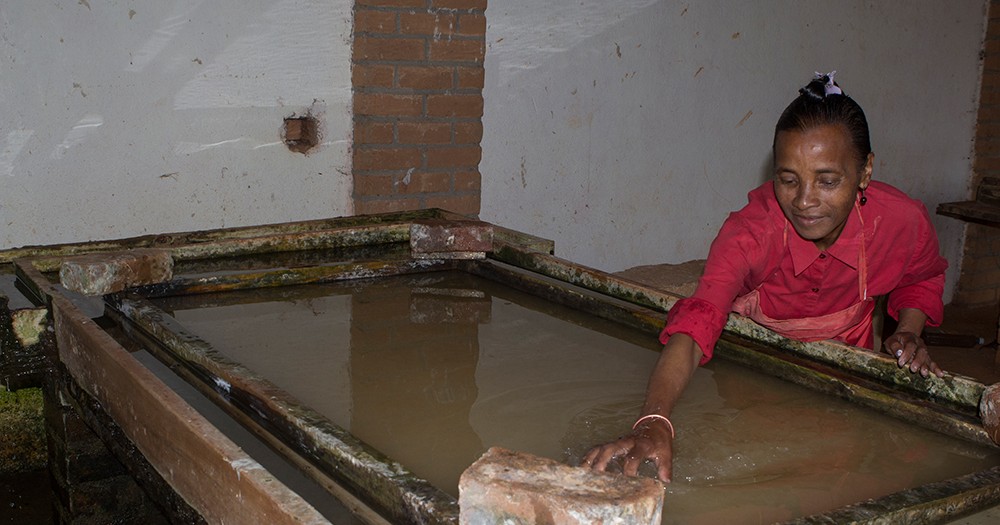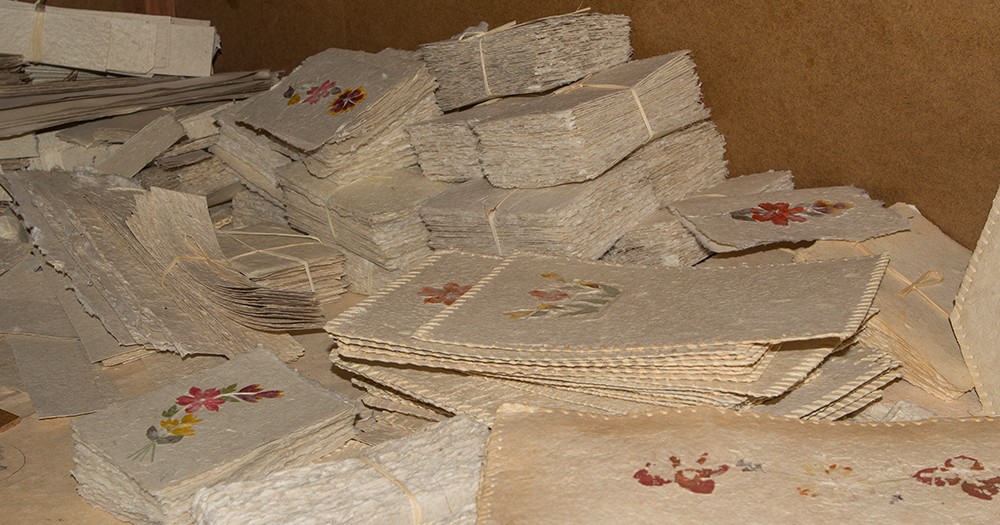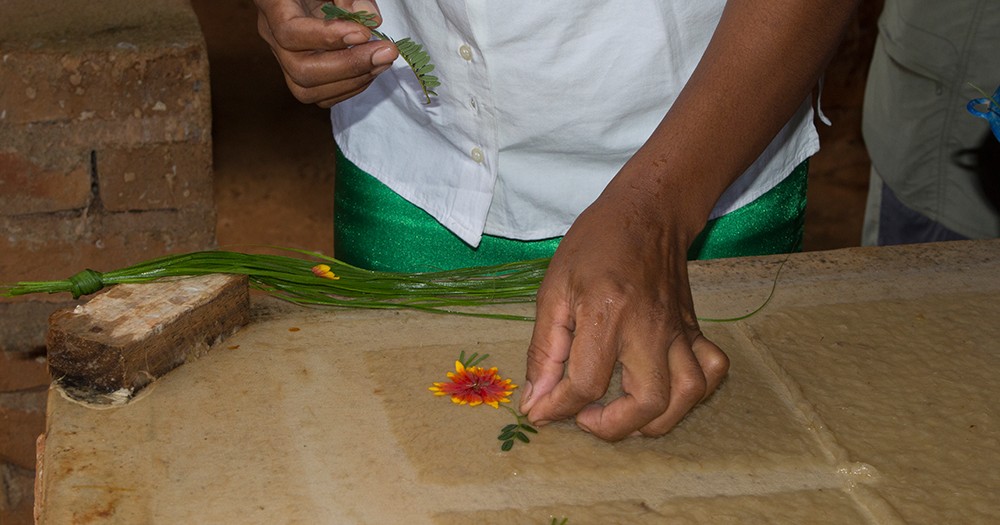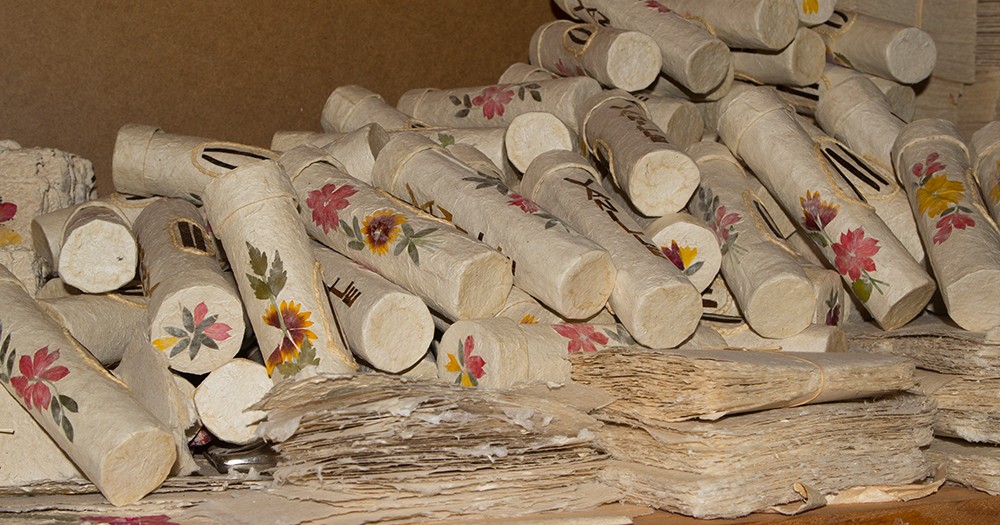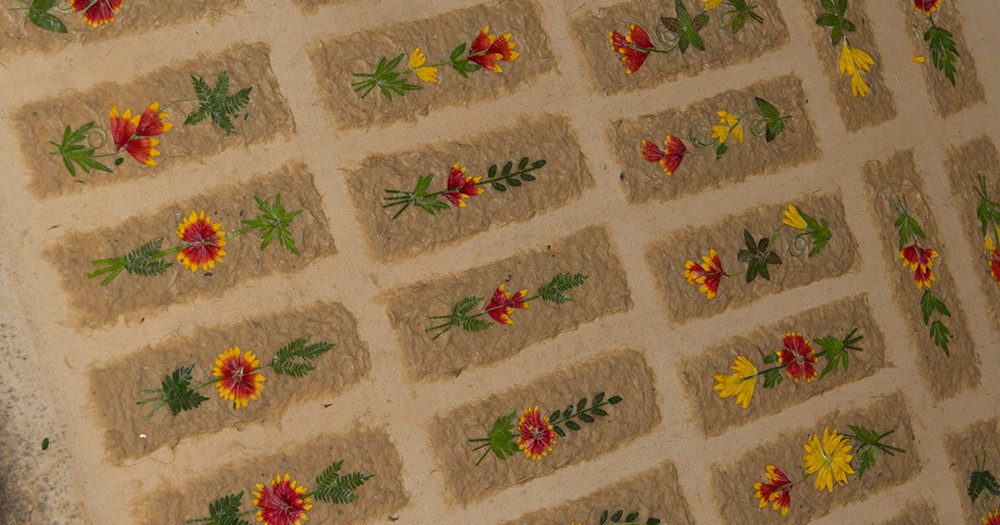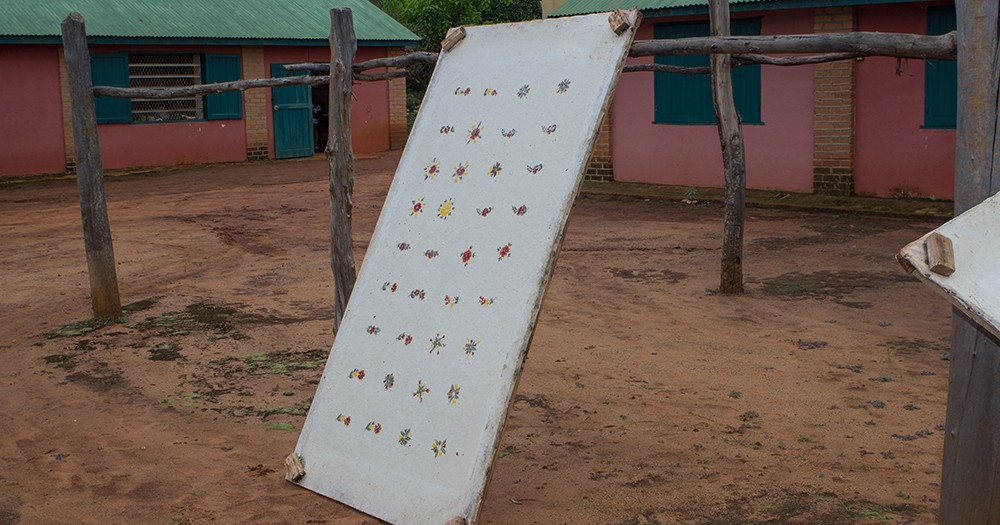Actually, the Antemoro ethnic group lives in southeast Madagascar, around Manakara and Farafangana. In the southern highlands, however, there is a small factory in the middle of Ambalavao, which still shows the production of the handmade paper called Antaimoro, which was once typical of the traditional Antemoro and still is today. Originally the Antemoro came from Arabs, who brought the knowledge of paper production and the Koran across the ocean. As the paper she brought with her came to an end, papermaking began in Madagascar. The Sorabe (from Arabic sora for writing and Madagascan be for great) is the most famous work of writing written on Antaimoro. It contains a first transcription of the Malagasy language.
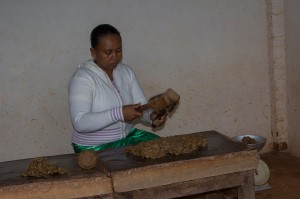
The paper needs wild mulberry trees, Madagascan avoha. Part of the bark is supplied from south-east Madagascar, but most of it now comes from the area between Ambalavao and Fianarantsoa. The bark, cut into strips, is boiled for a good six hours until it becomes a brownish, greasy fibre mass. The workers now select black fibres and dirt crumbs by hand so that the paper is as clean as possible later on. The boiled fibres are then beaten rhythmically flat by hand with heavy wooden beaters until only a pulpy mass is left on the table. The workers form half a kilo of brown lumps from the porridge, which are easy to store and transport. The lumps do not therefore have to be processed immediately, but can sometimes remain lying around for a few days.
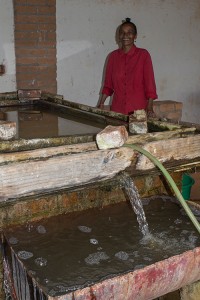
Production continues on specially built wooden frames on which large rectangular scoop sieves covered with thin linen cloths rest. Water is let into the frame by dissolving the bark lumps. The mash must now be distributed as evenly as possible in the water on the sheets in order to obtain a uniformly thick paper everywhere. If the worker is satisfied with the distribution of the mash, she leaves the water off the rack. What remains is a wet, thin layer of mash on the linen cloth. With a metal form and a spatula the different pieces of paper are now separated from each other – so they do not have to be cut later and they keep the typical, somewhat irregular edge. For decorative papers such as bookmarks, picture frames or albums, time-consuming detailed work now begins: Freshly picked, shiny flowers and leaves are placed individually, piece by piece, on the wet paper. Finally, the papers are placed on the large racks in the sun to dry them. After one or two days, the finished small works of art can be carefully removed from the linen.
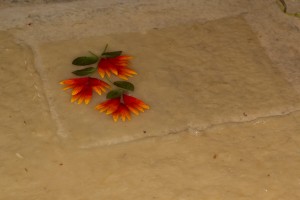
Besides the process of making the paper itself, Ambalavao also has a small manufactory, which creates small vanilla boxes, image frames, picture albums and other valuable Antaimoro products with raphia and paper. Everything is handmade, nothing is done fast or without experience. This is how the knowledge of paper production and processing is still passed on from generation to generation.
The paper mill in Ambalavao is open all week from sunrise to sunset, only during lunchtime from 11.30 a.m. to 1 p.m. the work is paused. The visit is free, but anyone who wants to can tip the women or stock up on Antaimoro paper in the small shop next door.
 MADAMAGAZINE Your Magazine about Madagascar
MADAMAGAZINE Your Magazine about Madagascar
